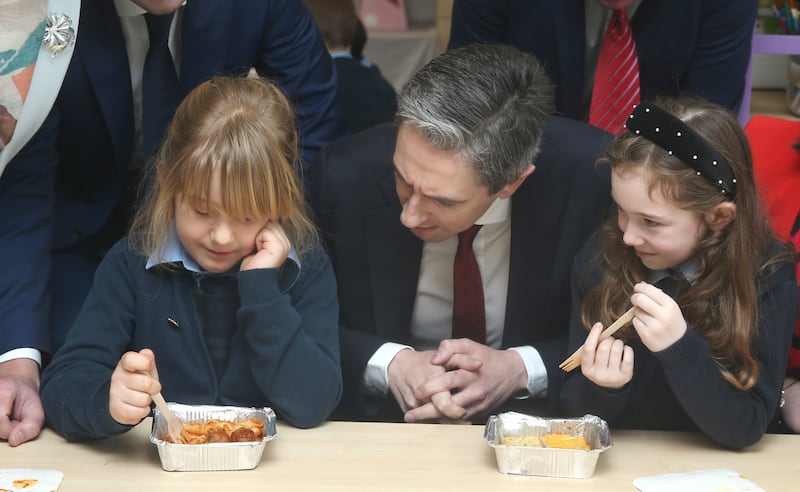Beef stroganoff, tuna bake, pasta bolognese and pumpkin and lentil dahl with rice are just some of the hot meals on offer to children under the hot school meals programme.
The programme was first introduced in 2003, with hot meals becoming part of the scheme in 2019, starting with 37 schools. In Budget 2025 the Government announced there would be an extension of the free hot school meals programme to include all 3,000-plus primary schools from next year, up from the current 2,200 that are eligible for the scheme.
The aim of the scheme is to “provide regular, nutritious food to children to support them in taking full advantage of the education provided to them”.
Though there are many reasons around child poverty and hunger for the introduction of the free meals scheme, there is also the nutritional and health impact.
READ MORE
Research commissioned by the Health Service Executive (HSE), published earlier this year, found one in five primary schoolchildren are overweight or obese. However, this rate is higher among children in more disadvantaged areas.
The menus available to students are wide and varied. Some of the companies allow parents to order for the pupils, in order to reduce food waste.
According to the menu available on FreshToday, one of the providers of hot school lunches, children can avail of a variety of options such as roast beef with mashed potato, pepperoni and mozzarella ciabatta, chilli con carne with rice and Mexican three bean stew, among others.
Lunches4School offers different options on a Friday, which feature more “treat” foods, such as chicken goujon bread rolls; cocktail sausages with potato cubes; or shredded chicken, fried rice and curry sauce.
Tracie Tobin, principal of St Michael’s School, Limerick, said her school was one of the first to receive the free hot meals, and the extension to all schools was “wonderful”.
“It’s delivered to the school first thing in the morning at 7am. Then we put it straight into the oven and time it so they’re ready for when the children want them, so it’s served hot,” she said.
When it was initially launched, there were concerns about both plastic waste and food waste. However, Ms Tobin said the lunches were delivered in compostable containers with compostable cutlery, and the leftover food was put in a container and sent home with the children.

Under the scheme in her school, parents log into an app where they can order specific food for their child.
“They’re asked about allergies and then they’re immediately locked out of the choices that may contain those allergens. This provides a lot of relief for parents, to make sure they’re not getting sick when in school,” she added.
“They get 15 different choices per day, and then they review it every so often. The menu does change on a Friday, but it’s still healthy. Like they might be chicken goujons, but they’re proper chicken breasts. Chicken curry is a very popular option.”
There are nutritional standards in place for the programme, and published by the Government. Processed meat and processed chicken products, fried foods, foods cooked in batter or breadcrumbs or foods containing pastry should be provided only once a week maximum, if at all. Fish should also be provided at least once a week, it added. There are notes on the way the meals are cooked, too.
“Don’t add salt to water when cooking pasta, rice or other starchy foods. Boil or steam potatoes. Do not add oil or butter or deep fry,” the standards state.
- Sign up for push alerts and have the best news, analysis and comment delivered directly to your phone
- Join The Irish Times on WhatsApp and stay up to date
- Listen to our Inside Politics podcast for the best political chat and analysis














